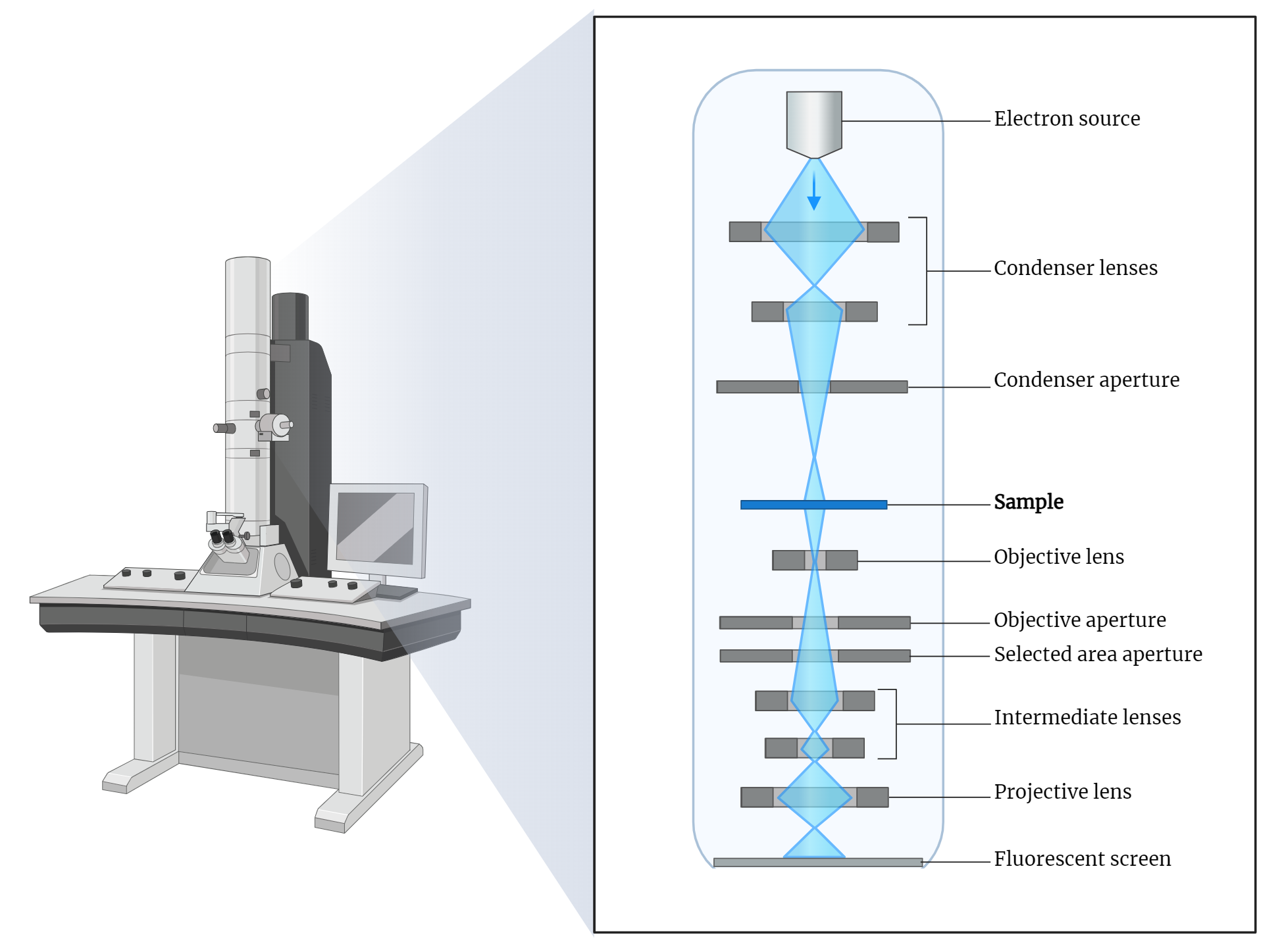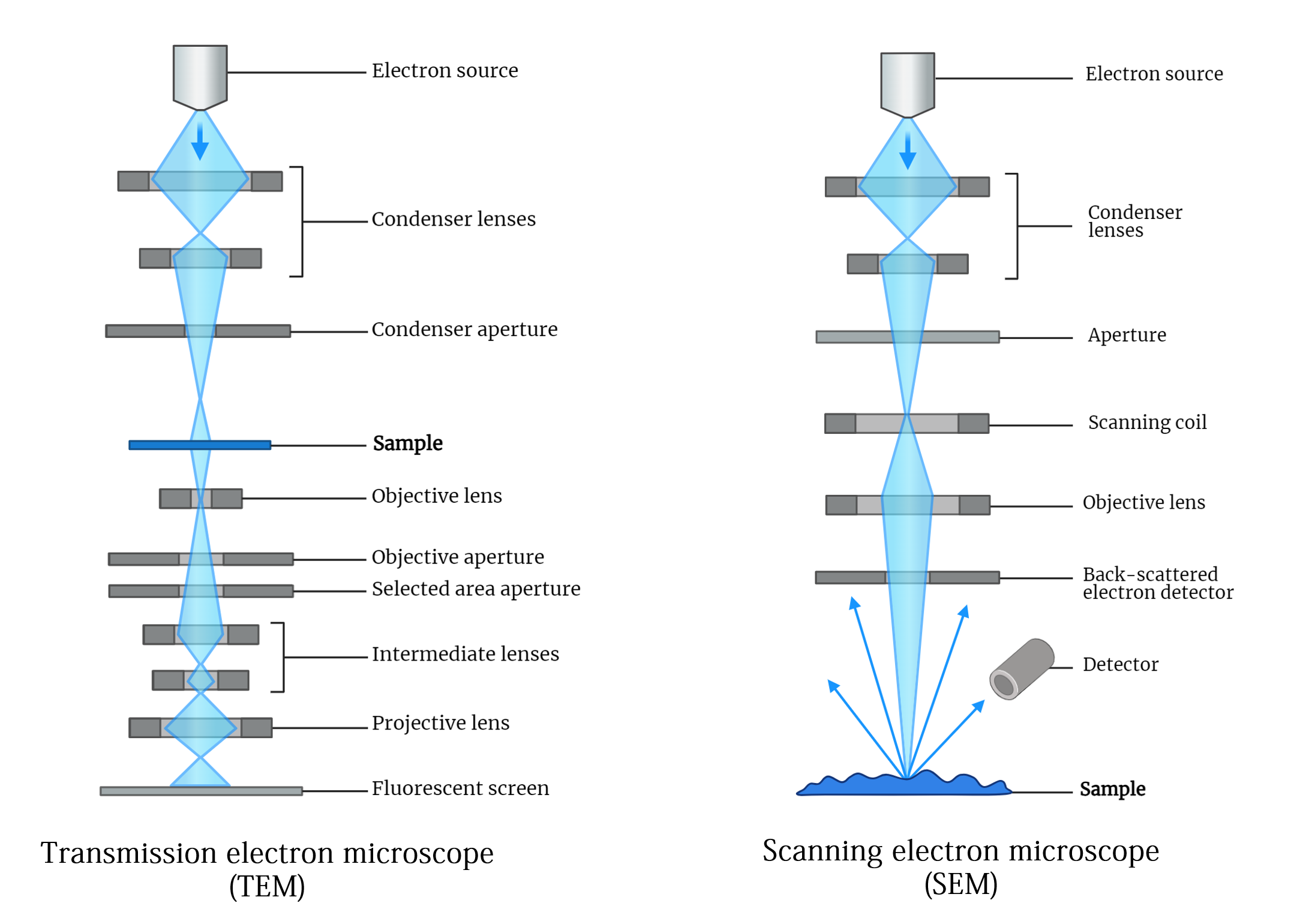-

Transmission Electron Microscope (TEM)
The transmission electron microscope (TEM) is a groundbreaking tool in electron microscopy, first developed by Knoll and Ruska in the 1930s. It utilizes a focused electron beam to produce highly detailed images of thin specimens by detecting electrons transmitted through them. TEMs employ thermionic emission guns and can accelerate electrons to high potentials, enabling high-resolution…
-

Electron Microscopy
In 1924, Louis de Broglie theorized that particles possess wave-like properties, a concept later confirmed by electron diffraction experiments. This breakthrough laid the foundation for electron microscopy. The de Broglie equation describes the relationship between a particle’s wavelength and its momentum, highlighting that electrons accelerated in a microscope can achieve extremely short wavelengths, crucial for…
-

Freeze Fracture Technique
The Freeze Fracture Technique is a powerful method utilized in the study of cell biology and other biological samples. By freezing and breaking a sample, its internal structure is revealed and can be examined under an electron microscope. This technique is commonly applied to investigate cell membranes, organelles, microorganisms, as well as in fields like…
Categories
- Anatomy (9)
- Animal Form and Functions (38)
- Animal Physiology (65)
- Biochemistry (33)
- Biophysics (25)
- Biotechnology (52)
- Botany (42)
- Plant morphology (6)
- Plant Physiology (26)
- Cell Biology (107)
- Cell Cycle (14)
- Cell Signaling (21)
- Chemistry (9)
- Developmental Biology (36)
- Fertilization (13)
- Ecology (5)
- Embryology (17)
- Endocrinology (10)
- Environmental biology (3)
- Genetics (59)
- DNA (27)
- Inheritance (13)
- Histology (3)
- Hormone (3)
- Immunology (29)
- life science (76)
- Material science (8)
- Microbiology (18)
- Virus (8)
- Microscopy (18)
- Molecular Biology (113)
- parasitology (6)
- Physics (3)
- Physiology (11)
- Plant biology (26)
- Uncategorized (7)
- Zoology (112)
- Classification (6)
- Invertebrate (7)




